
Last December we stayed in the beautiful Jerusalem neighborhood called Emek Refaim. I took a photo of the this residence with a gate and stairs. Recently, I created this watercolor. In addition to being a study of a piece of a residential area, it is a study of greens. How many greens can one create in watercolor – you can take any other tube of color, even a red or a brown, add a bit to the green, and you have a new green, often a grayer green. Stairs (with shades of brown and tan) draw the viewer into the scene.
I started posting my artwork and some photos to Instagram – feel free to follow me on Instagram. I will continue to post my favorite artwork here on Sketching Out, because on a blog it feels more permanent (though what in life is really permanent). And there is more opportunity to discuss the artwork.
If you want a good watercolor book, I recommend David Bellamy’s Complete Guide to Watercolour Painting.
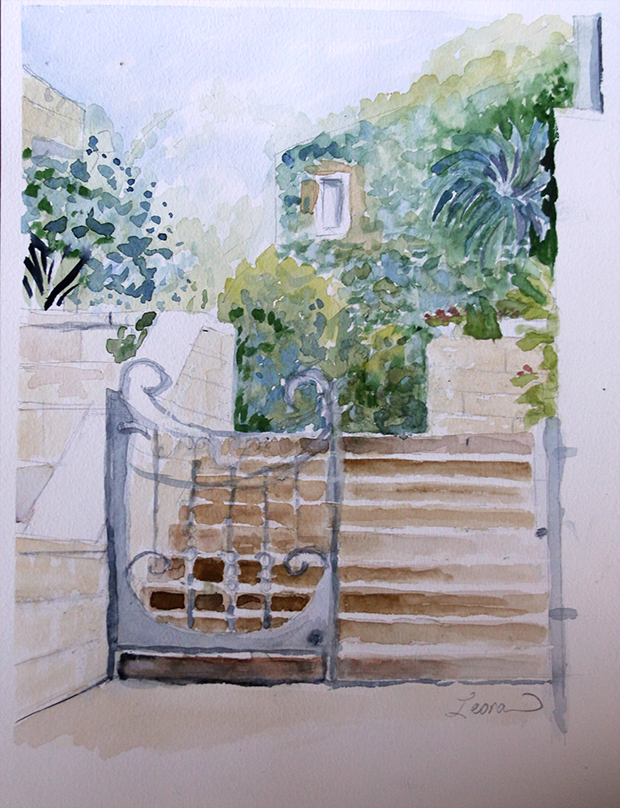

In December 2017 we visited the old market (known in Hebrew as a shuk) in Jerusalem called Mahane Yehuda. On a Friday the market is bustling: you can buy fruit, chocolate, wine, baked goods, fish, spices, meat and more! On a Saturday night the place converts into little bars and places to eat. We also visited on Saturday night, but because of the crowds and a broken oven in one restaurant, we ended eating a meal back on Emek Refaim Street, near where we were staying.

My husband bought some wine and some nuts for our hosts that were visiting on Shabbat. My daughter bought some chocolate in a bag. Each little chocolate candy said: “Hatan v’ Kalah” – Groom and Bride. This was because our excuse for visiting Israel was the wedding of a relative. She gave the candies to her class members upon return to the U.S.

I did not explore the spices carefully, but I am sure I would find some that are unfamiliar. The sign on the left by the rose spices says: “Please do not touch with your hands!!! Thank you!”
Have you ever visited an old market? What did you buy? What did you see?
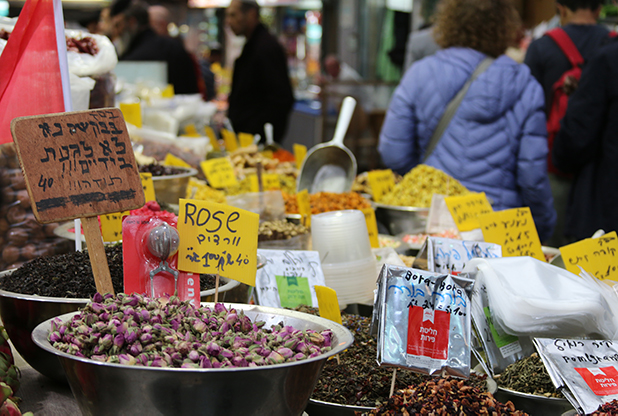
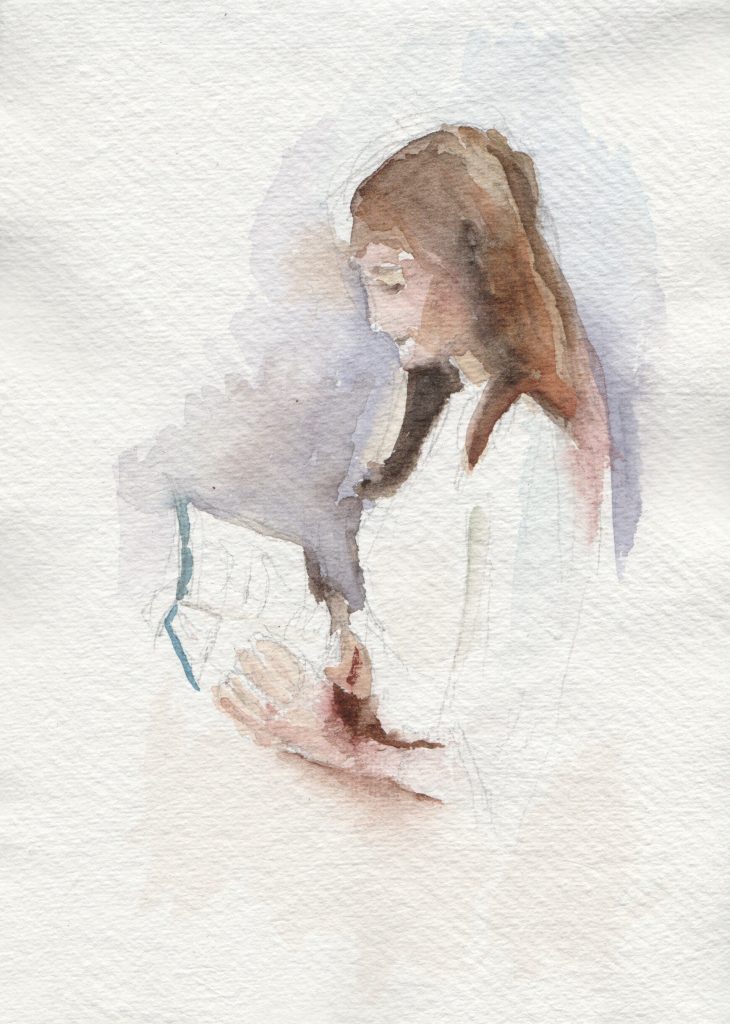
I painted this watercolor sketch of a girl praying with concentration in late December. There was a poster on the wall, and it inspired me to paint. The “concentration” refers to the concept of kavanah – כַּוָּנָה. At least to me, she does look like she is praying with intent, with feeling and emotion. Of course, we have no way of knowing for sure. But that is part of art – looking at a scene, and interpreting it in our own way.
I was pleased with the way all the white works in this watercolor sketch. I am trying to resist commenting on any piece of this watercolor sketch that I see as less than perfect.
Looking forward to doing more painting. Thank you for looking and for reading – and it is always a pleasure to get a kind comment or two.
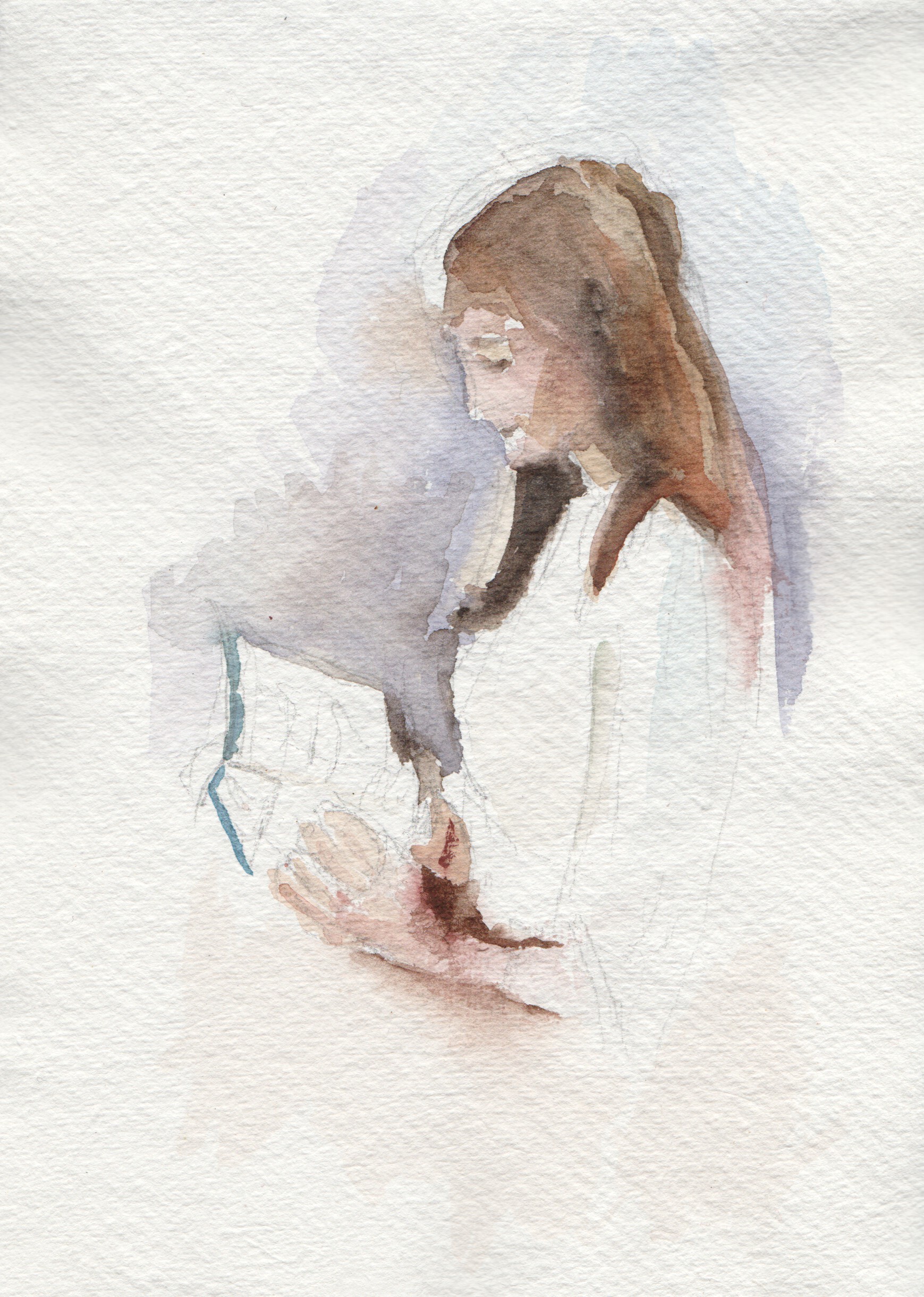

When walking around the neighborhoods of Jerusalem, one can often see flowers in a pot outside of quaint older buildings. I enjoyed converting this scene of pots with plants on a wall into a watercolor sketch.
In depicting a scene with watercolor, the artist must ask: how much do I show? What are the colors I should choose? Do I work to extend the contrasts of lights to darks or do I keep the range to lighter tones?

Update: I added detail of the potted plant.
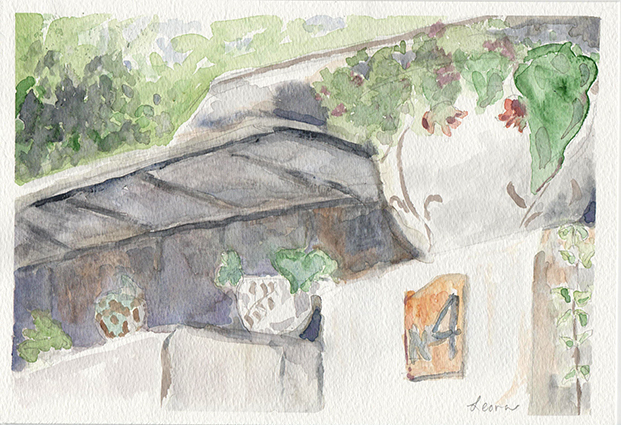
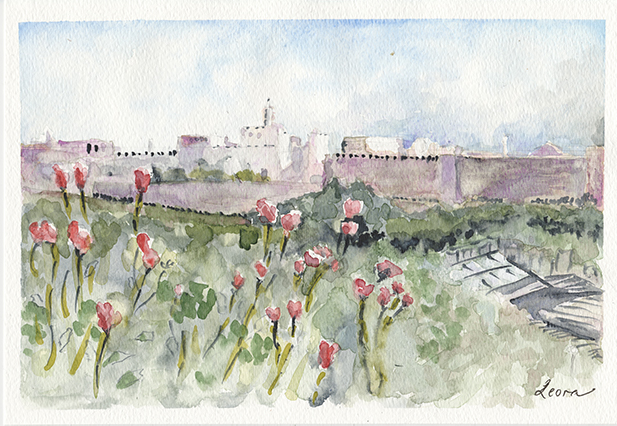
Finally, I am getting back the main reason for this blog: posting sketches of my art. Above is a scene from a neighborhood of Jerusalem called Yemin Moshe – it overlooks the Old City. I purposely chose a limited palette for this watercolor. The composition and the drawing are about where I want them to be. I will probably return to this subject and depict it again. I left the areas white that I might in the future make into a very pale gold.
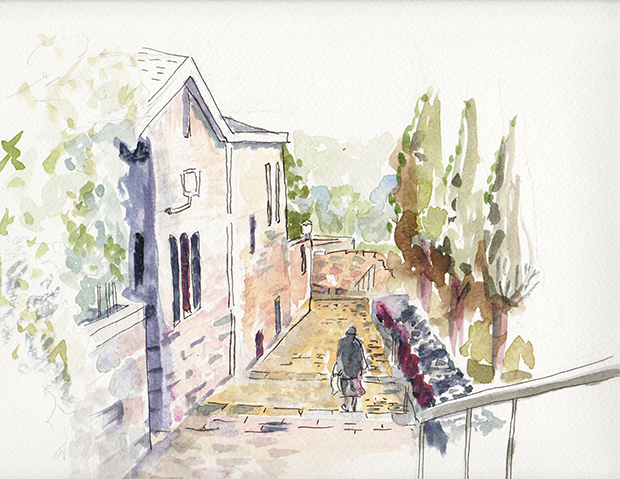
Yemin Moshe was built at time before cars. There are now places to park behind the houses, but one mostly walks up and down stairs to tour the neighborhood. We visited Yemin Moshe in 2016. It is quite picturesque (and pricey as well).
When I post these watercolors, I think of the first words of the famous Naomi Shemer song:
“The mountain air is clear as wine
And the scent of pines …”
Looking forward to doing more watercolors, landscapes or portraits. Have you ever painted or drawn? What are some of your favorite subjects to depict?














